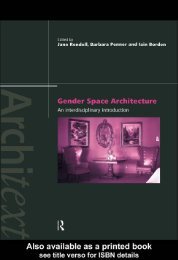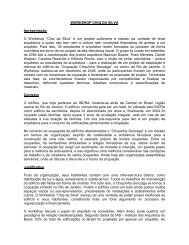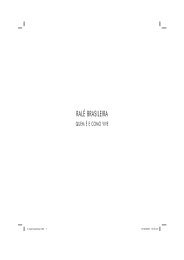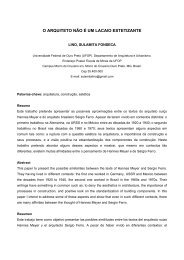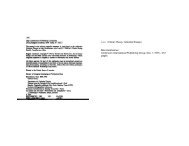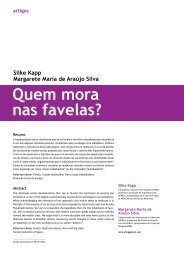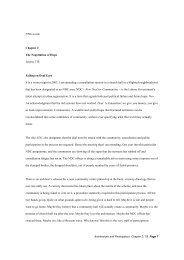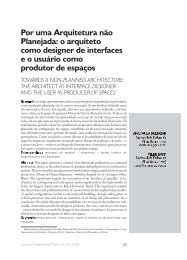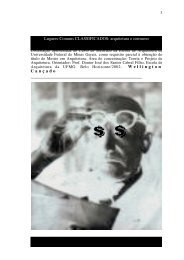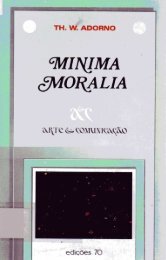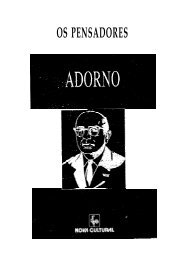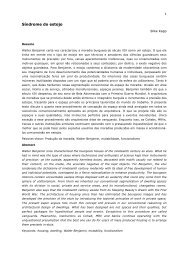Architecture and Modernity : A Critique
Architecture and Modernity : A Critique
Architecture and Modernity : A Critique
Create successful ePaper yourself
Turn your PDF publications into a flip-book with our unique Google optimized e-Paper software.
202<br />
Daniel Libeskind, extension<br />
As visitors follow the zigzag pattern<br />
of the Berlin Museum with the<br />
through the museum as dictated by<br />
Jewish Museum, view from<br />
the outside.<br />
the layout of the building, they are re-<br />
(Photo: Bitter Bredt.)<br />
peatedly confronted by these voids,<br />
which are accessible nowhere <strong>and</strong><br />
which seem to be senseless. The<br />
flowing movement of the routing<br />
breaks down as a result. The character<br />
of the space changes at the<br />
places where the voids are spanned:<br />
the high spacious galleries turn here<br />
into narrow low-ceilinged bridges<br />
from which one can glimpse the cold<br />
gloomy depths of the voids.<br />
88<br />
The zigzag-shaped building<br />
has no entrance on the outside. It<br />
has the appearance of an enigmatic<br />
<strong>and</strong> impenetrable volume (figure 88).<br />
Visitors have to enter the building through the old entrance in the main building,<br />
which provides a link to the new complex through the basements. To this end an incision<br />
has been cut in the main building that is a mirror image of one of the voids in<br />
the new complex. This mirror relationship, while it cannot be seen by the unsuspecting<br />
visitor, nevertheless forms an active presence, evoking the fatal mutual involvement<br />
of German <strong>and</strong> Jewish culture.<br />
The underground level of the new building contains the areas reserved for the<br />
museum’s own Jewish collection (figure 89). The whole is organized on three axes.<br />
One axis forms the link with the main stair that leads to the exhibition rooms on the<br />
upper stories. A second axis is oriented on a freest<strong>and</strong>ing tower-shaped object that,<br />
like the incision in the main building, is a “voided void”—echoes, as it were, of the<br />
voids that form the straight line that intersects the zigzag-shaped building. While the<br />
first void refers to the absence of Jews in Berlin, an absence that is decisive for<br />
the identity of the city, this voided void that is white <strong>and</strong> open to the sky refers to the<br />
streams of energy <strong>and</strong> creative potential that was cut off along with the annihilation<br />
of so many people. Finally, there is a third axis in the basement that leads to the “garden<br />
of E. T. A. Hoffmann.” This consists of a wood of concrete columns at right<br />
angles to the sloping ground. A ramp that winds round this square garden gives<br />
access to street level.<br />
Despite the fact that its layout is far from self-evident, the new museum is a<br />
very effective response to the existing urban situation (figure 90). The slightly protruding<br />
facade on the Lindenstrasse accentuates the curve in the street at this point.<br />
The front facade of the new extension is extremely narrow here, but it is still clearly<br />
203



